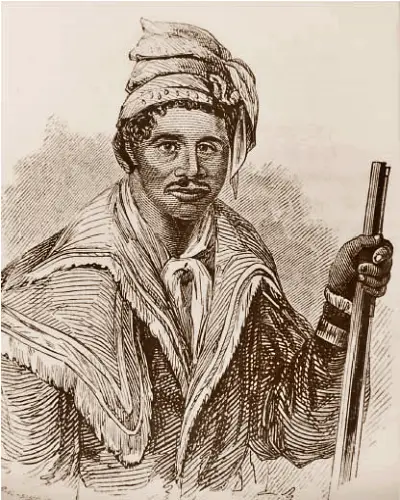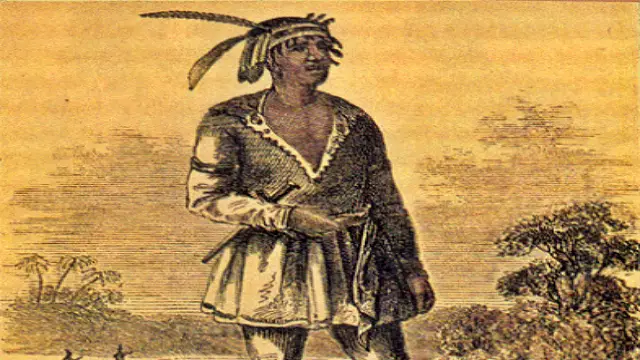The Seminole people of Florida and Oklahoma have a rich and complex history. They did not come from a single tribe but were formed from various groups that merged over time. Around 1750, tribes like the Creeks and Miccosukee, along with other Muscogean peoples, began to settle in Florida. They were fleeing the encroachment of white settlers, especially leading up to the French and Indian War (1755-1763).
A Quest for Freedom
At the same time, enslaved Black people were also seeking freedom. Some had already escaped and formed communities, such as the Gullah people in Georgia and South Carolina. They preserved parts of their African traditions and language. The Spanish offered wages to Black individuals who would join their garrisons in Florida. However, many soon found that life in the army was not much better than slavery.
These runaways, known as maroons, fled into the swamps of Florida, where they could evade capture by slave catchers and Spanish authorities. The term “Seminole” was first used to describe the Native people who fled to Florida. It may come from the Spanish word Cimarron, meaning “wild” or “runaway,” though scholars debate this origin.
A New Alliance
Initially, the Black and Native communities maintained their own identities and governance. However, as more settlers moved into Florida, both groups recognized the need to unite. They continued to live in separate villages but began to trade, strategize against white settlers, and intermarry. Many Black individuals had Native ancestry and became known as Black Indians or Black Seminoles.
One notable figure was John Horse, also known as Gopher John (1812-1882). He was the son of a Seminole father and an escaped slave mother. Although he was considered a slave by both whites and Natives, he nominally belonged to Chief Micanopy. John was a skilled warrior and an interpreter, often working alongside the famous leader Osceola.

Fighting for Freedom
Osceola, who may have been married to a Black woman, strongly opposed slavery. He collaborated with John Horse and another Black Seminole leader, Abraham, to ensure that Black Seminoles were not used as bargaining chips in treaties with white settlers. Osceola protested any treaty that required Natives to reveal the locations of Black Seminole villages or return escaped slaves.
In October 1837, John Horse was captured alongside Osceola and sent to Fort Marion in St. Augustine. Determined to escape, he and several other leaders starved themselves for days, pried open the bars of their cell, and fled the fort. With Osceola imprisoned and later dead, John Horse emerged as a leader for the next generation. He agreed to negotiate with the Army only after ensuring that his people would not be enslaved.
A Journey to Oklahoma
John Horse and his band eventually resettled in Oklahoma. In 1840, he returned to Florida to persuade Wild Cat (also known as Cooacochee), a Native Seminole leader, to surrender. Cooacochee agreed, and John Horse accompanied him and his people to Oklahoma. For his efforts, John was granted his freedom by both white authorities and Chief Micanopy.
However, more white settlers began to pour into the Plains states, some illegally entering Oklahoma. Many of these settlers were from the South and aimed to make Oklahoma a slave state. They also sought to dispossess the Natives of their promised land. Concerned about these developments, Cooacochee and John Horse gathered their people in 1847 and fled across Texas into Mexico.
A Life of Service
In Mexico, John Horse served in the Mexican army for a time. He later returned to Oklahoma, where he also worked as a scout for the United States Army. In 1882, he traveled to Mexico City to advocate for land grants for the Seminoles and Black Seminoles still living in Mexico. Tragically, he died during this trip, and the location of his burial remains unknown.
Legacy of the Black Seminoles
Today, Black Seminoles continue to live in Oklahoma, Texas, Mexico, Florida, and the Bahamas. They honor the legacy of John Horse and Osceola, the Native leader who fought for their rights and welcomed them into his ranks. Their story is a testament to resilience and unity in the face of adversity.
The history of the Seminole people, particularly the Black Seminoles, is a powerful reminder of the diverse roots that make up American heritage. Their journey reflects the struggles for freedom and identity that many faced during a tumultuous time in history.

